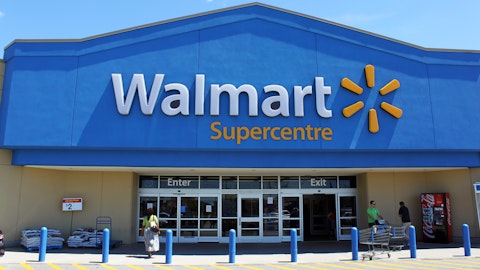Devin Ryan: I guess just first one to zero in on transaction banking here in platforms. $325 million for transaction banking and other in 2022 is up 50% year-over-year. So, you guys have really had great growth from scratch just a couple of years ago, but still obviously immaterial. So, I just want to talk a little bit about how you feel like progress is going in that part of the business. Can this get to a multi-billion dollar business just doing kind of what it’s already doing? I know you just launched in Europe there, really just trying to think about kind of the execution roadmap for that part of the business.
Denis Coleman: Sure. Thanks for that question. Now, we are very pleased with the progress of the transaction banking business, and it’s a business that has particular benefits as we scale activities on it. We have our tech platform up and running. We continue to grow our clients on the platform. They unanimously continued to give us the feedback that it is a very differentiated and attractive platform to be part of. And we have taken that business, as you say, from its inception to larger scale. We think there is a lot of potential for that business on the forward. And we are very focused at this point in time in continuing to drive deposit balances, continue to drive our customer count, further penetrate, as you mentioned, our international expansion continues.
We have opened in our fifth country. We now have increasing capabilities to serve clients across the world. There are true benefits to the network effect of a business like this with global reach. And we continue to see very, very good opportunities for this business.
Devin Ryan: Okay. Great. Thanks. A follow-up here just on the market’s financing opportunity. So, that’s already obviously been a nice part of the story for Goldman. What do you need to do to grow financing further? Is it just a lot of the same kind of blocking and tackling, or are there specific things you could point to that could drive kind of another step function there? And then just kind of more near-term, you talked about prime brokerage balances being down and declining through the quarter. Has that changed at all just to start this year with risk appetite to maybe a bit better today than through most of the fourth quarter?
Denis Coleman: Yes. A couple of comments I would make. So, I think as it relates to the FICC financing, we have a very good opportunity set in front of us. The progress that we have made with the client franchise and our market shares and given the overall backdrop and the availability of financing in the world right now, our clients continue to come to us. And given the capital position that we sit with at the beginning of the year, we have capacity to fuel incremental financing activities in the FICC business. On the equity side of the equation, obviously, asset markets moved around quite severely, particularly in the end of the year, which drives prime brokerage balances. But as you know, we are also working very hard to reduce our financial resource footprint, particularly our G-SIB level.
That brought with it significant RWA reductions. And it was not really the environment that we were pushing on growth, certainly in the fourth quarter. I think as we turn the page on a New Year, there is lots of opportunity for us to continue to drive our equity financing activities, and we have less constraints given that we have now achieved the 3% G-SIB target.
Devin Ryan: Okay. Thank you.
Operator: We will take our next question from Dan Fannon with Jefferies.
Dan Fannon: Thanks. Good morning. I wanted to expand upon the new Slide 7. And as you look at the different buckets and asset classes, how much of these funds are evergreen and open or are going through periodic fund raises and closings? And I was hoping you could maybe provide some context on what the fundraising has been for subsequent funds, meaning the size increase that you have typically seen for second or third funds from the previous one to give us a sense of the momentum you are seeing in that business?
Denis Coleman: Sure. So, we always have a very, very broad portfolio of funds. And we have been in this investing business for a number of decades, and it’s one of the contributors to our position as the number five largest active asset management firm in the world. And across the portfolio of different funds, we have some extremely mature businesses. Our GS Capital Partners, equity investing business, our mezzanine funds, some of our loan funds. We have multiple mature businesses that are frequently deploying successfully and then going back to raise new monies and continue to support sort of the franchises that we have in that channel. And we continued to diversify and expand our offering and open up new strategies in response to what we see are pockets for client demand.
So, as we think about the overall opportunity set, we have a global, broad and deep investing platform that has offerings for many different types of investors, many of which are very, very mature in terms of their track record and some of which are newer.
Dan Fannon: Okay. And then just following up on the earlier question around kind of the FICC and trading backdrop. It sounds like you are through kind of the optimization of RWAs, but maybe can you talk about where you see on the broader intermediation side, the backdrop, maybe the backdrop today and maybe where you see market share opportunities into the rest of the year?





